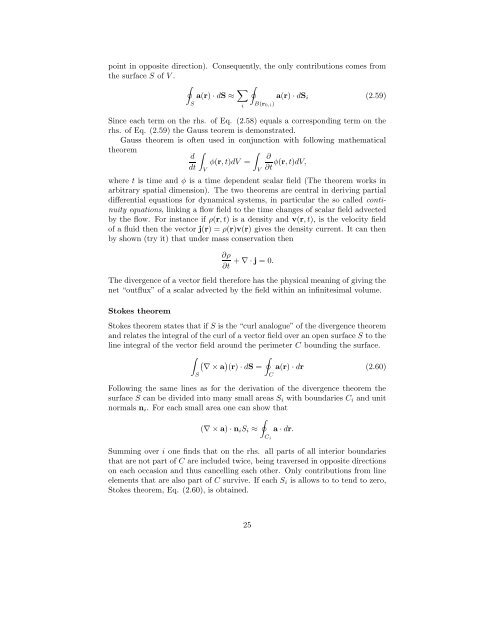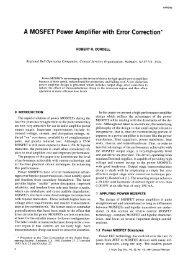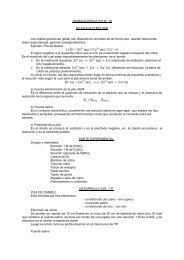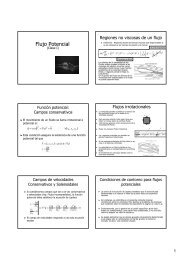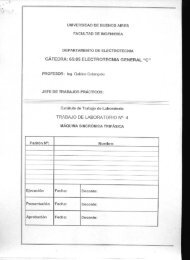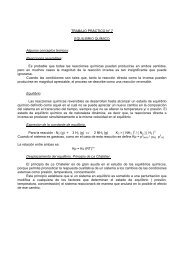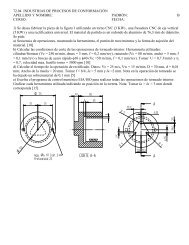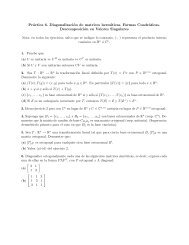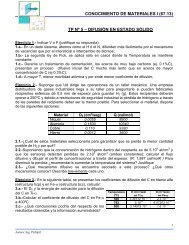Introduction to vector and tensor analysis
Introduction to vector and tensor analysis
Introduction to vector and tensor analysis
Create successful ePaper yourself
Turn your PDF publications into a flip-book with our unique Google optimized e-Paper software.
point in opposite direction). Consequently, the only contributions comes from<br />
the surface S of V .<br />
<br />
a(r) · dS ≈ <br />
<br />
a(r) · dSi<br />
(2.59)<br />
S<br />
i<br />
B(r0,i)<br />
Since each term on the rhs. of Eq. (2.58) equals a corresponding term on the<br />
rhs. of Eq. (2.59) the Gauss teorem is demonstrated.<br />
Gauss theorem is often used in conjunction with following mathematical<br />
theorem<br />
d<br />
dt<br />
<br />
V<br />
<br />
φ(r, t)dV =<br />
V<br />
∂<br />
φ(r, t)dV,<br />
∂t<br />
where t is time <strong>and</strong> φ is a time dependent scalar field (The theorem works in<br />
arbitrary spatial dimension). The two theorems are central in deriving partial<br />
differential equations for dynamical systems, in particular the so called continuity<br />
equations, linking a flow field <strong>to</strong> the time changes of scalar field advected<br />
by the flow. For instance if ρ(r, t) is a density <strong>and</strong> v(r, t), is the velocity field<br />
of a fluid then the vec<strong>to</strong>r j(r) = ρ(r)v(r) gives the density current. It can then<br />
by shown (try it) that under mass conservation then<br />
∂ρ<br />
+ ∇ · j = 0.<br />
∂t<br />
The divergence of a vec<strong>to</strong>r field therefore has the physical meaning of giving the<br />
net “outflux” of a scalar advected by the field within an infinitesimal volume.<br />
S<strong>to</strong>kes theorem<br />
S<strong>to</strong>kes theorem states that if S is the “curl analogue” of the divergence theorem<br />
<strong>and</strong> relates the integral of the curl of a vec<strong>to</strong>r field over an open surface S <strong>to</strong> the<br />
line integral of the vec<strong>to</strong>r field around the perimeter C bounding the surface.<br />
<br />
<br />
<br />
∇ × a (r) · dS = a(r) · dr (2.60)<br />
S<br />
Following the same lines as for the derivation of the divergence theorem the<br />
surface S can be divided in<strong>to</strong> many small areas Si with boundaries Ci <strong>and</strong> unit<br />
normals ni. For each small area one can show that<br />
<br />
(∇ × a) · niSi ≈ a · dr.<br />
Summing over i one finds that on the rhs. all parts of all interior boundaries<br />
that are not part of C are included twice, being traversed in opposite directions<br />
on each occasion <strong>and</strong> thus cancelling each other. Only contributions from line<br />
elements that are also part of C survive. If each Si is allows <strong>to</strong> <strong>to</strong> tend <strong>to</strong> zero,<br />
S<strong>to</strong>kes theorem, Eq. (2.60), is obtained.<br />
25<br />
C<br />
Ci


